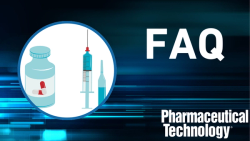
OR WAIT null SECS
- About Us
- Advertise
- Contact Us
- Editorial Info
- Editorial Advisory Board
- Do Not Sell My Personal Information
- Privacy Policy
- Terms and Conditions
© 2025 MJH Life Sciences™ , Pharmaceutical Technology - Pharma News and Development Insights. All rights reserved.
Chewable Tablets: A Review of Formulation Considerations
This paper reviews considerations for the formulation of chewable tablets including sensory characteristics, chewability assessment, and drug release.
Peer-Reviewed
Submitted: April 16, 2020; Accepted: July 1, 2020
Abstract
Chewable tablets are a versatile dosage form offering several advantages including oral drug delivery without the need for water, ease of swallowing, the stability advantages of solid dosage forms, and patient-centric drug delivery. They provide a convenient means of pediatric drug delivery and the delivery of nutritional products such as chewable multivitamins. Chewable tablets have also found application in veterinary medicines. This paper reviews considerations for the formulation of chewable tablets including sensory characteristics, chewability assessment, and drug release.
Chewable tablets are a widely used dosage form for the delivery of pharmaceutical, nutraceutical, and veterinary active substances. Some examples of marketed products are listed in Table I (1–10). Chewable tablets may be defined as tablets that are designed to be processed by chewing to facilitate release of the active ingredient(s). As a dosage form, chewable tablets have the advantages of conventional tablets in terms of manufacturability, dosing accuracy, portability, and long-term stability.Additionally, chewable tablets facilitate swallowing as the product is initially broken down into particles in the oral cavity. This is a useful patient-centric advantage for populations such as pediatrics for whom swallowing of conventional tablets is a concern (11,12,13). As water is not required for their administration, there is a benefit of convenience when dosing. Despite the widespread use of chewable tablets, there have been few comprehensive publications about them since the work of Mendes et al. in 1989 (14). FDA published a guidance in 2018 on quality attribute considerations for chewable tablets (15). These quality attributes are summarized in Table II. This paper provides a review and update of formulation aspects of importance to chewable tablets.
Formulation
Chewable tablets can be prepared in a variety of shapes. Some children’s products come in animal shapes to provide aesthetic appeal for this specific population.Because chewable tablets are broken down in the mouth before swallowing, total tablet weights can be higher than those utilized for conventional (swallow) tablets, which are usually less than 1000 mg. Antacid tablets, for example, often exceed one gram in total weight.Due to the tablets being orally reduced into particles, there is less need to use oval or capsule shapes, which are preferred for large conventional tablets.
Many of the formulation requirements for chewable tablets are similar to those of conventional tablets. Powder flow, compactibility, content uniformity, and tablet ejection requirements are dependent on the judicious use of bulking agents (diluents), binders, glidants, lubricants, and anti-adherents. Some diluents such as polyols also act as sweeteners. Coloring agents are often used in pediatric products to enhance aesthetic appeal, although synthetic colors should be used with caution in this population due to adverse effect concerns. The children’s multivitamin product listed in Table I addresses this aspect by the use of colors derived from natural ingredients (e.g., beet-derived colors). A major difference in terms of excipients when chewable tablets are compared to conventional tablets is the use of ingredients that address sensory characteristics.
Sensory factors and taste-masking
The organoleptic characteristics of chewable tablets that are important to consider include taste, after-taste, odor, flavor, texture, mouthfeel, and visual aesthetics of the product. The oral processing of chewable tablets makes taste-masking a necessity for most formulations. Sweeteners are almost always used and represent the simplest means by which to address taste concerns.Combinations of bulk sweeteners (e.g., sugars or polyols) with high-intensity sweeteners (e.g., aspartame) are common.The relative sweetness of some sweeteners used in chewable tablets is shown in Table III. In addition to relative sweetness, the sweetness-response time profile should be considered. For example, monoammonium glycyrrhizinate, while having a slow onset, has a prolonged sweetness.Blends of sweeteners may therefore be used to provide synergistic effects. Some high-intensity sweeteners exhibit a bitter taste or aftertaste with increasing concentration (16), an effect which can also be mitigated by combining two or more sweeteners (17).
Flavors are commonly used in chewable tablets. Mint and peppermint flavors are popular in antacid tablets.Pediatric products often use fruit-based and bubblegum flavors.Dry powder forms of flavors are preferable as they avoid the loss of volatile aromatic components during drying. For the same reason, direct compression is often preferable for chewable tablet manufacturing. In cases where wet granulation is used, flavors should be added extra-granularly. Flavors can be further modified by the addition of agents such as citric acid.
When the addition of sweeteners is insufficient to address taste issues, either due to the high dose of the active or its inherent bitterness, other approaches may be used, such as coating, ion-exchange resins, or chemical modification of the drug molecule. Coating and microencapsulation techniques are based on using polymers or lipids to form a physical barrier around particles that prevents unpleasant tasting molecules from coming into direct contact with taste receptors in the mouth. Coated particles are blended with fillers, disintegrants, and lubricants prior to tableting.Polymers that are insoluble in saliva but dissolve in gastric acid (e.g., amino methacrylate copolymer) may be used if an immediate-release dissolution profile is desired. Particle coating processes may be performed using fluid or spouted bed equipment. Coatings must have sufficient mechanical flexibility to withstand both the tablet compression process as well the oral chewing process after administration.
Mouth feel factors include sensation and texture. The dissolution of polyols is significantly endothermic, which leads to a cooling effect. Table III lists the heats of solution for some bulk sweeteners. A co-processed microcrystalline cellulose and guar gum excipient (Avicel CE-15) has been developed for chewable tablets and is claimed to improve mouth feel (18). Grittiness is influenced by particle size with smaller particles having lower grittiness and being more acceptable.Grittiness can be reduced by using powder particle sizes less than 300 µm (19,20). Sticking to the teeth, excessive gumminess, or viscosity and chalkiness are also undesirable.
Mechanical properties and chewability
The mechanical properties of a tablet are important to ensure tablet durability and low friability after compression, during packaging, shipping, and handling. For chewable tablets, they play a further role as these dosage forms must be readily chewable. Tablets having excessively high mechanical strength may present a risk to teeth, dentures, or mandibular joints. Only a few published studies have investigated the mechanical properties of marketed chewable tablets (21,22,23).
Chewability may be defined as the ease or difficulty in breaking a tablet by mastication. Mechanical tests that have been used to indirectly assess chewability include tablet breaking force (hardness), tensile strength, and the recently developed chewing difficulty index (23). These tests can be conducted both before and after a brief exposure to simulated saliva, the latter being applicable because many tablets will rapidly soften after being placed in an aqueous medium.
The breaking force is widely used in the pharmaceutical industry as a measure of the mechanical strength of tablets.The FDA guidance on chewable tablets recommends a breaking force upper limit of 12 kiloponds (kp) (15).As breaking force is dependent on tablet size, larger tablets (of similar composition) will have a higher breaking force.
Breaking force measurements may be used for a range of tablet shapes provided that the tablets are able to consistently break along a specific axis. For example, Figure 1 shows the use of a hardness tester to determine the breaking force of a square tablet that breaks along its diagonal axis.
The tensile strength can be used to normalize for tablet size and provide a more fundamental measurement of a tablet’s mechanical properties. The tensile strength can be determined from diametral compression or flexure (e.g., three-point bending) tests. While tensile strengths can be readily calculated for round flat-faced tablets, other shapes present a challenge as the required equations are more complex.
Tensile strength values for round cylindrical tablets may be calculated using Equation 1 (24).
where, σ is the tensile strength, F is the breaking force, D is the tablet diameter, and H is the tablet thickness.
Gupta et al. proposed the use of a chewing difficulty index (CDI) to assess tablet chewability.The CDI is calculated by Equation 2 (23).
where, F is the breaking force and H is the tablet thickness.
Nyamweya et al. have determined the CDI values for some commercially marketed chewable antacid tablets (25). These values were compared to CDI values from two prior studies on other products (21,23). Based on this aggregate data (of 24 different commercial chewable tablet products), the mean CDI obtained was 0.56 Nm (95% confidence interval [CI]: 0.44–0.67 Nm). For reference, the mean breaking force of the commercial products was 11.5 kp (95% CI: 9.9–13 kp), and the mean tensile strength was 0.98 MPa (95% CI: 0.85–1.11 Mpa).
Drug release
As for any dosage form, the drug-release characteristics of chewable tablets are critical to the bio-performance of the active ingredient. Different pharmacopeia show a large degree of variation in the disintegration and dissolution requirements for chewable tablets with some monographs not having any requirements for drug release testing (26). Omitting these tests, however, makes it challenging to evaluate the quality of chewable tablets and fails to address the question of what happens in the case of individuals who swallow chewable tablets whole.
Although rare, the gastro-intestinal impaction of (un-chewed) chewable tablets in adults leading to hospitalization has been reported (27,28). Despite these reports, a study by Michele et al. on the safety of chewable tablets in children two years of age and older found that these products were safe and well tolerated, with medical issues related to chewable tablet formulation being extremely rare (29). Several of the products listed in Table I have pediatric indications. A key aspect to preventing impaction or choking risks is the ability of a chewable tablet to either disintegrate or soften readily on exposure to saliva.
Ritschel and Koeleman reported that antacid tablets that were chewed instead of being swallowed provided faster and more effective relief (30). Many chewable tablet products do not contain disintegrants or super-disintegrants, which may lead to prolonged dissolution if they are not chewed.However, disintegration or rapid dissolution are critical to address cases in which an individual inadvertently swallows a tablet without chewing it.With regards to administration, the products in Table I fall into five categories:
- Tablets that must be chewed
- Tablets that must be chewed or crushed before administration
- Tablets that can be either chewed or dispersed in water before administration
- Tablets that can be either chewed or swallowed whole
- Tablets with no specific instructions given on chewing.
Therefore, depending on the product, chewing may or may not influence in vivo performance. A number of products listed in Table I may be taken without concern for food effects.
The QuilliChew ER product (Table I) illustrates the use of chewable tablets for sustained-release drug delivery. Like many sustained-release products, the potential for in vivo dose dumping in the presence of alcohol is highlighted in the label. Another product of note is Videx, for which thorough chewing or dispersion in water is required to release added buffers, which protect the acid labile active, didanosine, from gastric acid.
Veterinary products
Chewable tablets also find wide application in veterinary products for dogs and cats. An example is presented in Table I of Simparica Trio, which contains pork liver powder, hydrolyzed vegetable protein, sugars, and gelatin to address canine-specific sensory requirements. Due to dietary differences between species, some sensory requirements differ from those of humans. For example, dogs have a preference for animal-based proteins. Voluntary acceptance (the willingness of the animal to freely consume a product) is a desirable feature and may require the use of complex palatants (e.g., mixtures of proteins, sugars, and flavors) (31,32).Another important consideration is species differences in excipient safety, as observed with xylitol, which while being suitable for human consumption is highly toxic to dogs (33).
Conclusion
Chewable tablets are a versatile dosage form that combine the manufacturability and stability advantages of solid products while providing favorable organoleptic and administration benefits. The increased emphasis on patient-centric formulations in drug delivery presents further opportunities for the use of chewable tablets in specific populations such as pediatrics and differentiated pharmaceutical products as well as in other healthcare markets such as nutritional products, nutraceuticals, and veterinary medicines.
References
- Nature’s Health, Animal Parade Kids Immune Booster, https://naturesplus.com/products/productdetail.php?productNumber=29978, accessed April 14, 2020.
- Summary of Product Characteristics. Fosrenol 1000 mg chewable tablets, www.medicines.org.uk/emc/product/7494/smpc#, accessed April 14, 2020.
- Summary of Product Characteristics. Isentress 100 mg chewable tablets, www.medicines.org.uk/emc/product/8524/smpc, accessed April 14, 2020.
- Summary of Product Characteristics. Lipitor 20mg chewable tablets, www.medicines.org.uk/emc/product/5241/smpc, accessed April 14, 2020.
- Summary of Product Characteristics. Maalox Plus Tablets, www.medicines.org.uk/emc/product/5551/smpc. accessed April 14, 2020.
- Tris Pharma. Full Prescribing Information. Quillichew ER, www.trispharma.com/generic/Quillichew_ER_08_2018_FINAL_for_Website_Jan_22_2019.pdf, accessed April 14, 2020.
- Summary of Product Characteristics. Simparica Trio, www.ema.europa.eu/en/documents/product-information/simparica-trio-epar-product-information_en.pdf, accessed April 14, 2020.
- Summary of Product Characteristics. Singulair Paediatric 5 mg Chewable Tablets, www.medicines.org.uk/emc/product/197/smpc#, accessed April 14, 2020.
- VERMOX- mebendazole tablet, chewable. https://dailymed.nlm.nih.gov/dailymed/drugInfo.cfm?setid=a720c424-517a-461b-8e13-6c37caf8aa3f#S2. Accessed April 14, 2020.
- Videx (didanosine) Label, www.accessdata.fda.gov/drugsatfda_docs/label/1999/20154LBL.pdf, accessed April 14, 2020.
- R. G. Strickley et al., J. Pharm. Sci. 97 (5) 1731-1774 (2008).
- F. Liu et al., Drugs. 74 (16) 1871-1889 (2014).
- F.L. Lopez et al., Expert Opin. on Drug Deliv. 12 (11) 1727-1740 (2015).
- R.W. Mendes, A.O. Anaebonam, and J.B. Daruwaia, “Chewable Tablets,” in Pharmaceutical Dosage Forms: Tablets: Vol 1, H.A. Lieberman, L. Lachman, and J.B. Schwartz, Eds. (Marcel Dekker, New York, NY, 2nd ed., 1989), pp. 367-417.
- FDA, Guidance for Industry, Quality Attribute Considerations for Chewable Tablets(CDER, August 2018).
- S.S. Schiffman et al., Brain Res. Bull. 36 (5) 505-513 (1995).
- M. Behrens, K. Blank, and W. Meyerhof, Cell Chem. Biol. 24 (10) 1199-1204 (2017).
- Avicel CE-15. www.pharma.dupont.com/pharmaceutical-brands/avicelr-for-suspensions.html, accessed April 14, 2020.
- S. Kimura et al., Int. J. Pharm. 484 (1-2) 156-162 (2015).
- K. Dziemidowicz et al., AAPS PharmSciTech. 19, 2646–2657 (2018).
- M. C. Ambros et al., Pharm. Dev. Technol. 3 (4) 509-515 (1998).
- M. Lanz et al., Drug Dev. Ind. Pharm. 40 (12) 1623-1631 (2014).
- Gupta, N. Chidambaram, and M. A. Khan, Drug Dev. Ind. Pharm. 41 (2) 239-243 (2015).
- J. T. Fell and J.M. Newton, J. Pharm. Sci. 59 (5) 688-691 (1970).
- N. N. Nyamweya, S.N. Kimani, and K.O. Abuga, AAPS PharmSciTech 21(5), 139 (2020).
- V. Reggi and S. Walters, “Chewable Tablets: Time to Reassess a ‘neglected’ Dosage Form?” In: WHO Drug Information, 25, 223–228 (2011), https://apps.who.int/iris/handle/10665/74661. accessed April 14, 2020.
- D. Potyk, N. Engl. J. Med. 283 (3) 134-135 (1970).
- R.M. Wisniewski, D.D. Stone, and J.C. Fang, Gastrointest. Endosc. 45 (6) 518-521 (1997).
- T.M. Michele et al., J.Asthma. 39 (5) 391-403 (2002).
- W. A. Ritschel and H.A. Koeleman, Drug Dev. Ind. Pharm. 5 (4) 365-386 (1979).
- EMA/CVMP/EWP/206024/2011, Guideline on the Demonstration of Palatability of Veterinary Medicinal Products (Jul. 10, 2014), www.ema.europa.eu/docs/en_GB/document_library/Scientific_guideline/2014/07/WC500170030.pdf. accessed April 14, 2020.
- M. Aleo, et al., Open J. Vet. Med. 8, 107-118. (2018).
- R. Fahmy, D. Danielson, and M. Martinez, “Formulation and Design of Veterinary Tablets,” in Pharmaceutical Dosage Forms: Tablets: Vol 2, L.L. Augsburger and S.W. Hoag, Eds. (Informa Healthcare, New York, NY, 3rd ed., 2008), pp. 383-431.
- L. O’Brien-Nabors, “Alternative Sweeteners: An Overview,” in Alternative Sweeteners, L. O’Brien-Nabors, Ed. (CRC Press, Boca Raton, FL, 4th ed., 2012), pp. 1-10.
- JRS Pharma. “Emdex, Dextrates, NF,” Technical Literature.
- Handbook of Pharmaceutical Excipients. 6th ed. Rowe, R.C., Sheskey, P.J., Quinn, M.E., Eds. (American Pharmaceutical Association and the Pharmaceutical Press: Washington DC, London, 2009).
- R.W. Hartel, J.H. von Elbe, and R. Hofberger, Confectionary Science and Technology (Springer, Switzerland, 2018).
- S. E Hogan and G. Buckton, Int. J. Pharm. 207(1-2), 57–64 (2000).
About the Authors
Nasser Nyamweya, PhD*, nasser04@yahoo.com, is a Director at Pharma Manufacturing Solutions. He was previously a Lecturer at the School of Pharmacy, University of Nairobi. Samantha Kimaniis a Pharmacist (B.Pharm) and recently graduated from the University of Nairobi.
*To whom all correspondence should be addressed.
Article Details
Pharmaceutical Technology
Volume 44, Number 3
November 2020
Pages: 38–44
Citation
When referring to this article, please cite it as N. N. Nyamweya and S. N. Kimani, "Chewable Tablets: A Review of Formulation Considerations," Pharmaceutical Technology 44 (11) 2020.

 Download Issue: Pharmaceutical Technology-11-02-2020
Download Issue: Pharmaceutical Technology-11-02-2020

